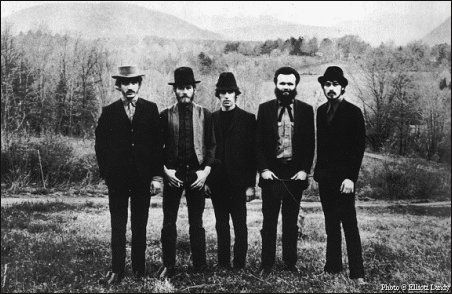"Castles Made of Sand Fall in the Sea Eventually": A look at Haight-Ashbury
- Gabrielle Bossy

- Jan 2, 2015
- 3 min read
“More than any other state in the union, California projects indelible images of material wealth, beautiful bodies, exotic landscapes, cultural diversity, and opportunities for personal reinvention.”[1] In no other place was this opportunity for personal reinvention more poignant than in the 1960s Haight-Ashbury district where hippies roamed free, dropped out, spread messages of love and peace and listened to a gamut of kick-ass music.
When I went to research the history of Haight-Ashbury, I noticed that there was more out there on its demise than on its existence. In essence, the summer of love (1967) marked the peak and then the downfall of Haight-Ashbury and hippie culture in general. Thousands of runaway youths fled to the neighbourhood, living in cramped quarters. A lack of food, medical care and housing took over, causing many to head for the hills (and I don’t mean Hippie Hill). It seemed this youth, that came to find the meaning of life, was finding bad trips and disease.
Despite this filthy image I gleaned, there still had to be something about Haight-Ashbury that was unique and special. Maybe that comes from my feelings towards it and not the historian researcher. So I wanted to speak about a couple of the cool things about Haight-Ashbury.

The Medical Clinic
Doctors and nurses aren’t exactly the people you expect to hang around a hippie haven. The medical clinic in Haight-Ashbury however shows that the educated want peace and love just as badly as any free-loving hippie. This medical clinic situated itself in the heart of Haight-Ashbury and provided free health care to those who needed it, all based around voluntary support. At its peak, this clinic had 40 physicians and 45 nurses helping out youth who were experiencing things like bad trips and anxiety attacks.[2] Not only did they do this for free, but they did this on what I would call “hippie terms”. They set up a “calm clinic” with dimmed lighting and used specific techniques to bring people down from their highs and anxiety attacks. Inside, signs read “I love you”.[3] Far from the sterility of hospitals and medical clinics everywhere, this clinic played to the hearts of these runaway youths. I mean…what more could a [home]sick hippie kid ask for, really?

The Lifestyle
Believe it or not, Haight-Ashbury wasn’t all about doing drugs. Although this played a huge role, the real message was to spread peace and share creativity. Coffee and music shops gave artists the freedom to test out and share their new work with a willing audience. In a report by the above-mentioned medical clinic, before 1967, the area was occupied by a small subculture of beatniks and hippies who were there to spread messages of peace and the meaning of life. It was when these messages became widespread that thousands came to the area and overcrowded. When they didn’t find a quick fix to their problems, the demise occurred.[4]

A cool photo I found (here) of a birthday party in Haight-Ashbury.
THE MUSIC-DUHHHHHH
Alright let’s get to the real reason why I wrote this blog post. The music. The epicness of the area. THIS is the reason why music lovers everywhere make pilgrimages to the sacred ground that is Haight-Ashbury- a now tourist-ridden neighbourhood. The Monterey Music Festivsl in Monterey California (1967) acted as a pinnacle to the scene but you wouldn’t believe the number of legends that lived in the area. This list included but was not limited to: Janis Joplin (635 Ashbury Street), Grahm Nash (731 Buena Vista West) and Sid Vicious (32 Delmer St).[5] One could walk down the street and hear Jefferson Airplane in the midst of rehearsal at 2400 Fulton Street (can you imagine??).[6] Then there was Jimmi Hendrix- the icon of the neighbourhood. The icon of American 60s rock music. Living at 1524 Haight Street, Hendrix is what comes to mind when you think of Haight-Ashbury. The epicness of his music took generations by storm (and still does). Upon his death, his house was painted red in his honour and today, fans can visit two murals at the site dedicated to him.[7]

Neighbourhoods like Haight-Ashbury, Yorkville and Greenwich Village really don’t exist in the same ways anymore. The music is unparallelled and the preservation is lacking. I think one of the best ways you can respect what little history is left from these areas can be done from our own homes, alone or in groups. That’s right. Put a record on and listen to the music. Hear the message.
Peace, love & history..
[1] Sarah Schrank. “California and the American Popular Imagination: Using Visual Culture in California History Pedagogy.” California History 87.1. 62.
[2]Margaret Sankot and David E. Smith. “Drug Problems in Haight-Ashbury”. American Journal of Nursing 68.8. August 1968. 1686-1689.
[3] Sankot and Smith, 1686-1689.
[4] Sankot and Smith, 1686-1689.
[5]Examiner.com. “Famous addresses around Haight Street- MYO Haight-Ashbury Walking Tour”.
[6] Examiner.com.
[7]www.citywalkingguide.com/sanfransisco/jimihendrixhouse.



Comments